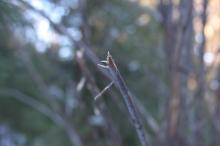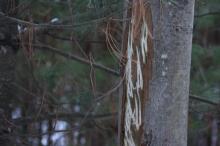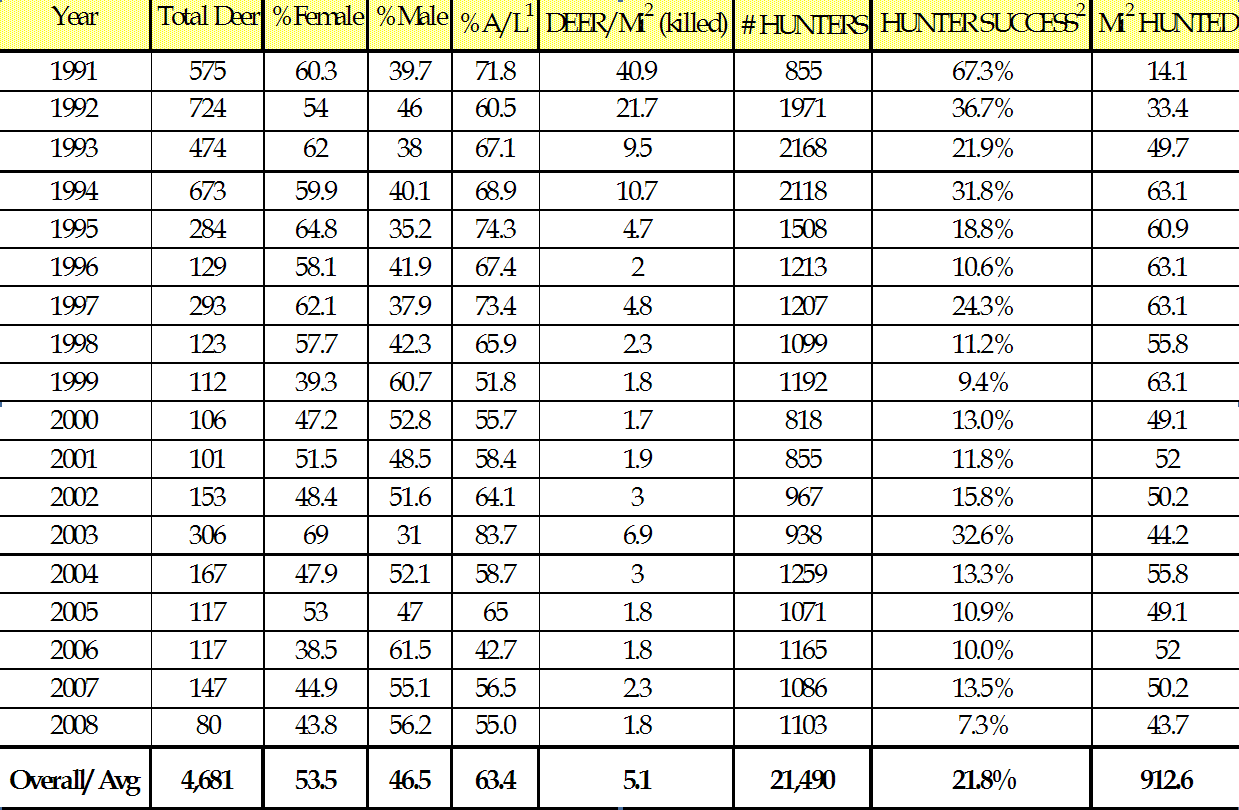Ishani Shrestha, Nguyen Ha, and Risalat Khan
In the mid 1980s, a trip to the forest surrounding the Quabbin reservoir hardly gave away that the forest with its towering trees and flourishing ferns was being “invaded” by white-tailed deer. With their natural predators like cougars and gray wolves removed from North-East United States, with hunting prohibited and with human intervention that enabled them to find food sources in agricultural fields and gardens, the deer population in this region saw a steady incline since the establishment of the Quabbin forest in the 1930s.
When deer densities reach as high as 30-35 deer per square mile as was the case in the Quabbin, the health and diversity of the forest is greatly compromised. Intensive deer browsing suppressed the regeneration of some desirable tree species like the Eastern hemlock that supports floral communities, in addition to destroying the understory which mostly comprised brow se-sensitive herbs and shrubs. The abundance of these ungulates for an extended period of time in the Quabbin led to significant damage in the plant diversity since all that remained were the unpalatable species (to them – mostly ferns) and the upper canopy. A study by the University of Wisconsin concludes: “Thus, as local deer browsing increases in mixed coniferous-deciduous forest stand, understory herb community diversity declines, while ferns, grasses, sedges, and rushes become increasingly dominant.” Also troubling is the fact that compared to invasive plant species, the native plant species are more susceptible to deer browse.
Photo: Deer browse
Photo: Deer antler rubbing on trees
Furthermore, the disturbance to the natural forest composition has adverse effects on the food web and animal diversity. The habitat loss for shrub nesting birds leads to a decline in their number and a possible increase in their prey numbers. The destruction of the understory also means a change in the microclimate of the forest floor; it has been observed that in such cases, the soil temperature rises whereas its moisture declines [1]. Such conditions prove beneficial for species like the ground-dwelling beetle but unfavorable for most gastropods. Studies also show that ungulates play a direct role in increasing the mineralization rates in forests, because plants that are browse tolerant tend to have high lignin concentrations and more likely than not, an increase in forest litter will change the soil fertility.
In addition to degrading the forest ecosystem, a population explosion of the deer poses a threat to human health and safety, along with creating economic difficulties. We are all too familiar with deer-vehicle collision cases, deer housing ticks that carry Lyme disease and farmers complaining about crop damage.
However, the most important impact of deer on the Quabbin forest that resulted in deer becoming a major concern to the Quabbin managers was something different altogether. Since the major function of the Quabbin is supplying safe potable water to many communities, the managers were concerned that deer would impact the water quality adversely if they continued to exist in such abundant numbers. Because of their prevalence everywhere, small saplings could not grow into larger trees. And the tree composition of the Quabbin was rather homogeneous in terms of their ages. In the 1930s, when the entire valley was prepared to create the reservoir, there was a clear-cut, and all the trees were planted right after that. So, if for some reason, these trees were to die (say, from a hurricane, or just old age), there would be nothing to replace them, because the deer don’t let anything grow! Hence, the water-filtering function of the forest will drop drastically. The Quabbin reservoir water will be contaminated, with artificial and natural agents, and purifying the water suitable for supplying to communities would become extremely difficult.
For all these reasons, when the deer overpopulation became just too problematic in the late 1980s for the foresters to “let nature take its course” any longer, they decided that a well managed annual hunting program alongside a desirable species plantation program would be the best course to follow. As was expected, there was opposition from the anti- interventionists and animal rights groups – but this was a plan the foresters needed to implement if they were to change Quabbin into an ecologically rich area with trees of different ages.
The Metropolitan District Commission (MDC) conducted its first successful hunt in 1991 when 576 deer were killed. Since the deer were not used to being hunted, the first few years were very fruitful in terms of the number of deer killed, because the deer had not learnt aversive behavior. The MDC, since then, has continued to organize controlled hunts, and gradually the number of deer kills fell, because the deer became more intelligent and also decreased in number. However, the MDC did experiment with no hunting in certain areas of the Quabbin for some years. Mr. Jan Dizard, professor of Environmental Studies at Amherst College, says in his book Going Wild, “It took only a few years for the results of this two- pronged strategy of stimulating regeneration and keeping the pressure on the deer to be noticeable. Young saplings began to appear and, most crucially, many were escaping the attention of the deer.” A botanist from the University of Massachusetts who had been studying the Quabbin for years reported that she had found a few wildflowers; the first that had seen on the reservation in memory.”
Unfortunately, just when the Quabbin was experiencing less pressure from the deer and more heterogeneity from regeneration, another herbivore came up as a new cause for concern. Between early to mid 1800s, moose were extirpated from Massachusetts, but since the late 1980s, moose sightings have steadily increased. From an estimate of 75 individuals in 1998 to about 1000 in 2006, the moose population in the state is definitely headed uphill. “Reasons for the increase in moose populations include the absence of predators, reversion of farms to forested areas, legal protection, increased wetland from increasing beaver populations and larger forest openings” [3, 4].
Also a member of the deer family but thrice as heavy as the white tailed deer and almost twice as tall, the moose is likely to create more problems if not managed properly. Their extraordinary size and voracious appetite compels foresters to believe that they will pose similar threats as the deer did but in much greater magnitude. Although there are only minor differences between the two ungulates in their browsing and dietary habits and reproduction rates, it is highly probable that the moose will hamper forest diversity and alter its ecosystem greatly, and there is evidence to suggest that they have already started to do so.
The deer hunting program has been quite successful in maintaining the integrity of the forest, even though it has drawn negative attention from many segments of the public. The managers at the Quabbin now face a similar dilemma to the one they faced some twenty years ago. There is no doubt that they will face public pressure if they introduce a moose hunt in addition to an annual deer hunt. But if they are to respect their primary concern – the quality of the reservoir water – they might have to do just that.
References:
[1] T.P. Rooney, D.M. Waller / Forest Ecology and Management 181 (2003) 165–176
[2] Quabbin Reservation White-Tailed Deer Impact Management Program: Results from 2008, Department of Conservation and Recreation
[3] 2006 Moose Survey, Massachusetts Department of Conservation and Recreation
[4] Franzmann and Schwartz 1997


